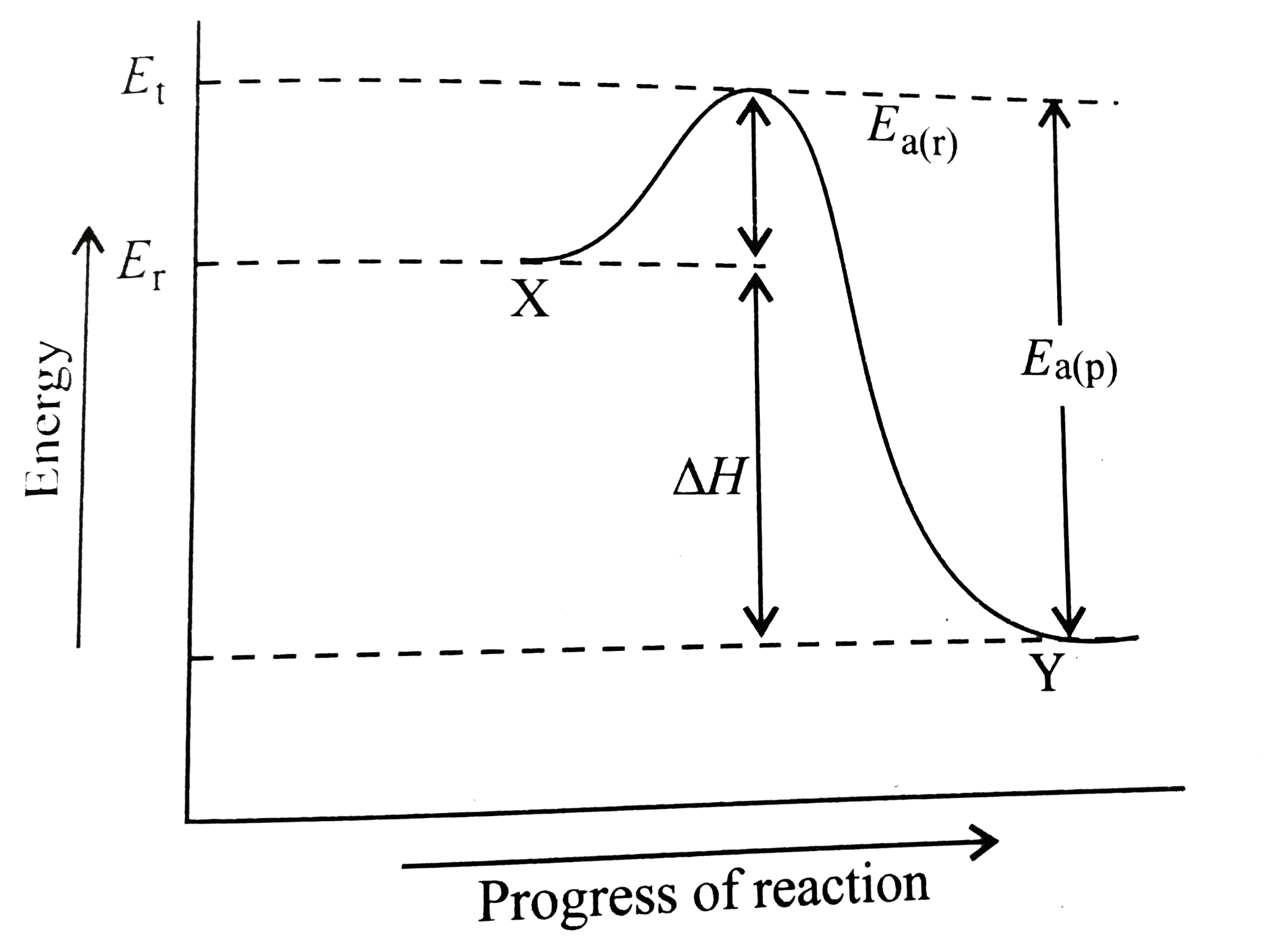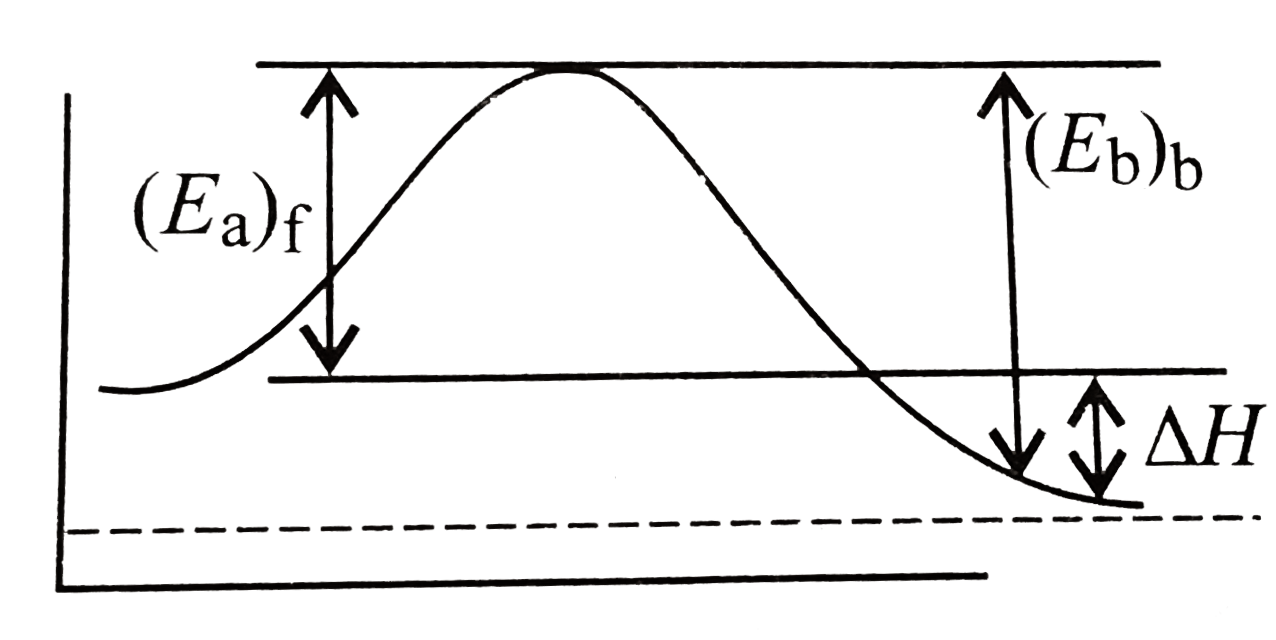An exothermic reaction X→Y has an activation energy of 90kJmol−1 of X and the heat of reaction is 250kJ. Find the activation energy of the reaction Y→X.
Since the reaction is exothermic, Ea(P)>Ea(r), so the activation energy diagram will be as shown in Figure below.
Energy of activation for the reaction: Y−X
Ea(p)=Ea(r)+ΔH=90+250=340kJ
Remember that for reaction with
np=nr(ΔH=ΔU)

Activation energy diagram for the given problem
Topper's Solved these Questions
- CHEMICAL KINETICSBOOK - CENGAGE CHEMISTRY ENGLISHCHAPTER - CHEMICAL KINETICSEXERCISE - Ex 4.1 (Objective)
9 Videos
- CHEMICAL KINETICSBOOK - CENGAGE CHEMISTRY ENGLISHCHAPTER - CHEMICAL KINETICSEXERCISE - Ex 4.2 (Objective)
10 Videos
- CHEMICAL KINETICSBOOK - CENGAGE CHEMISTRY ENGLISHCHAPTER - CHEMICAL KINETICSEXERCISE - Archives Subjective
23 Videos
- CARBOXYLIC ACIDS AND THEIR DERIVATIVESBOOK - CENGAGE CHEMISTRY ENGLISHCHAPTER - CARBOXYLIC ACIDS AND THEIR DERIVATIVESEXERCISE - Exercises Archives (Analytical And Descriptive)
34 Videos
- COORDINATION COMPOUNDSBOOK - CENGAGE CHEMISTRY ENGLISHCHAPTER - COORDINATION COMPOUNDSEXERCISE - Archives Subjective
18 Videos
Similar Questions
Define activation energy of a reaction.
View SolutionDefine activation energy of a reaction.
View SolutionDefine activation energy of a reaction.
View SolutionAn exothermic reaction A→B has an activation energy of 17kJ per mole of A. The heat of the reaction is 40kJ. Calculate the activation energy for the reverse reaction B→A.
View SolutionActivation energy of the reaction is :
View SolutionIn an exothermic reaction X→Y, the activation energy is 100kJmol−1 of X. The enthalphy of the reaction is −140kJmol−1. The activation energy of the reverse reaction Y→X is

View SolutionFor an exothermic reaction A→B, the activation energy is 65kJmol−1 and enthalpy of reaction is 42kJmol−1. The activation energy for the reaction B→A will be:
View SolutionAn exothermic reaction, A→B, has an activation energy of 15 kcal mol−1 and the energy of reaction is 5 kcal mol−1. The activation energy in kcal mol−1 for the reaction, B→A is
View SolutionCan activation energy for reactions be zero?
View SolutionDefine " Order of a reaction" and " Activation energy of a reaction " .
View Solution
